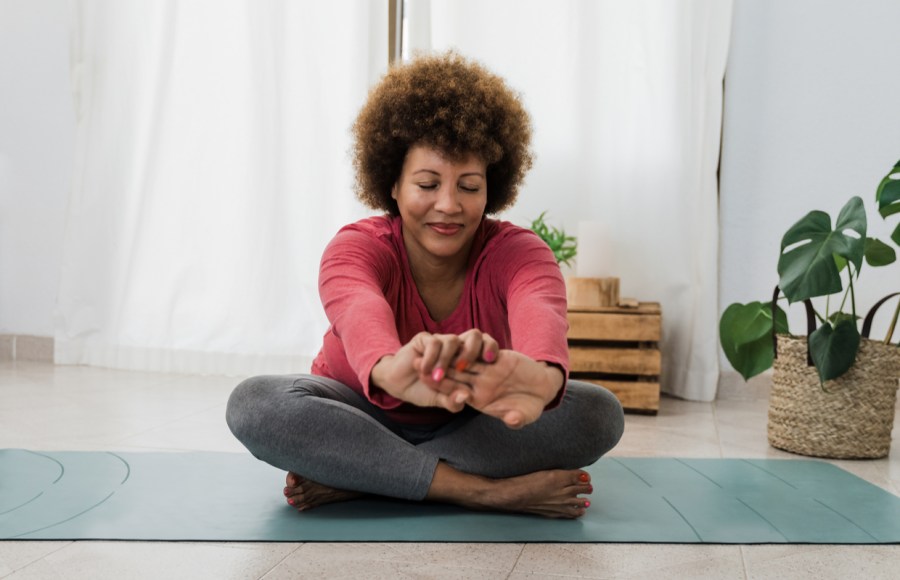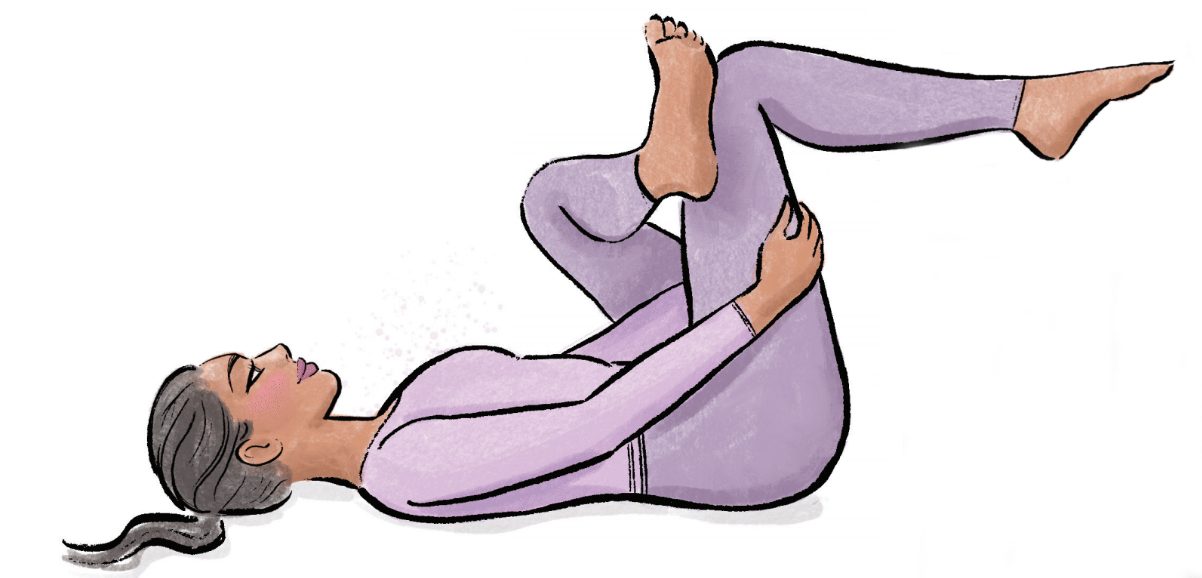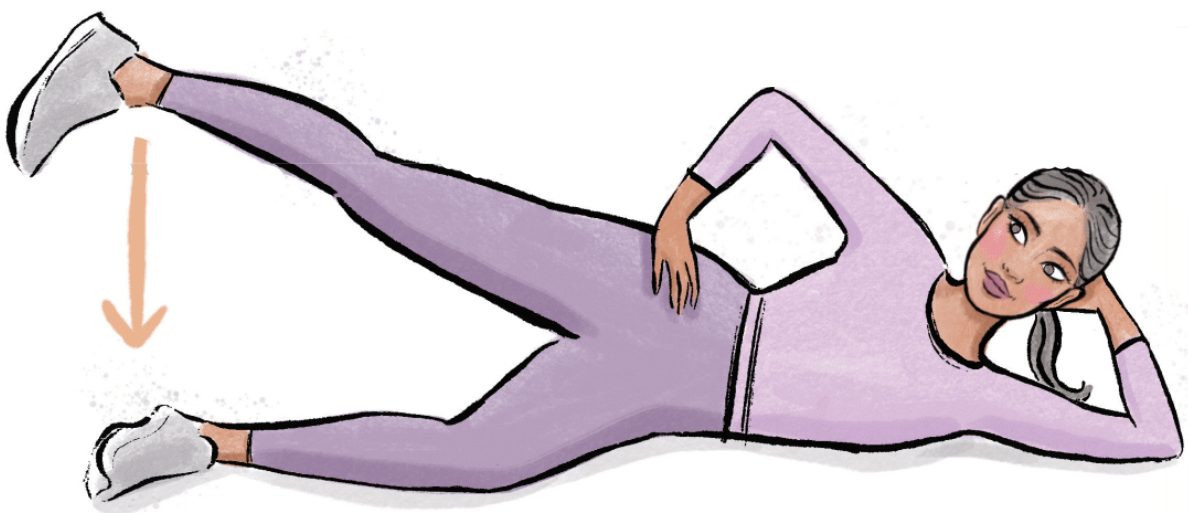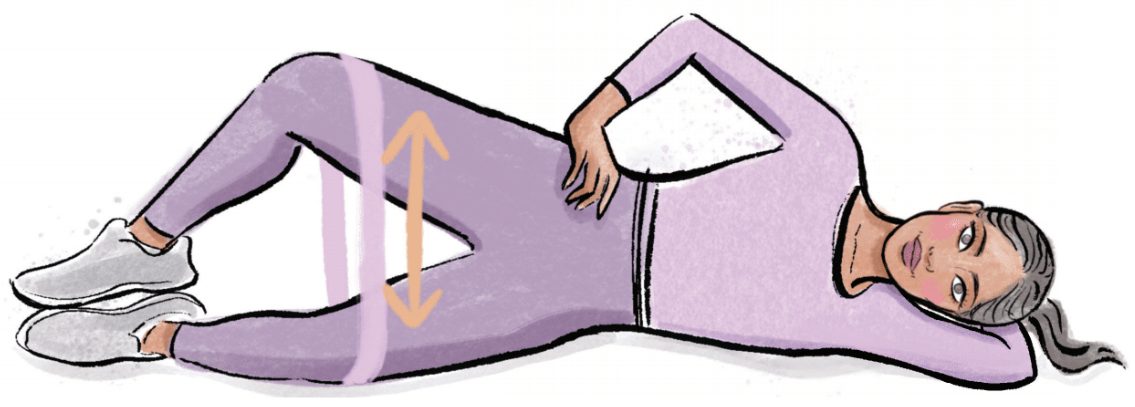For such a little, tucked-away muscle, the piriformis can cause some big problems, such as piriformis syndrome. Here’s what you need to know to avoid or reduce pain. We’ve also got some piriformis exercises and stretches to try at home…
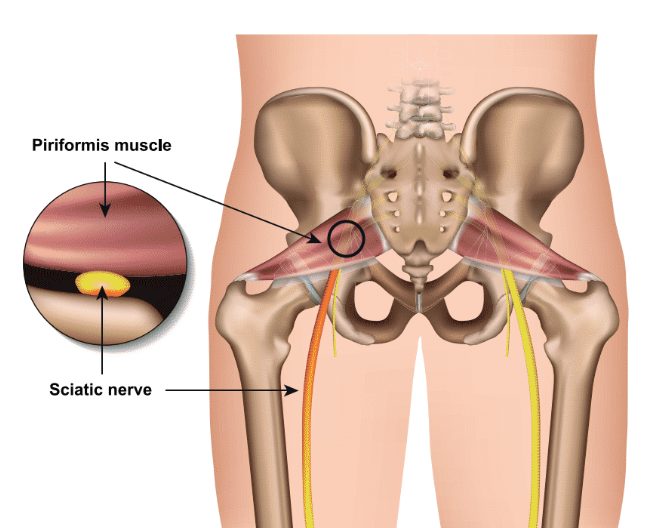
Where is the piriformis muscle?
The piriformis is a muscle in your buttock. Its name derives from the Latin pear-shaped – piri (pear), formis (shape) and it works with other muscles in the area, like the gluteus maximus, to turn your hip outwards,’ says Tim Allardyce from physiotherapy chain Surrey Physio. When your piriformis is working as it should, you’ll likely be unaware of its presence. But, if becomes tight or overworked, things soon hurt!
What causes piriformis syndrome pain?
You might feel simple piriformis pain as an ache deep in your buttock. Sometimes though, the pain becomes more complex, triggering further pain or tingling in the leg and foot. This is often blamed on a condition called piriformis syndrome. ‘In a small number of people, the sciatic nerve appears to run through the middle of the piriformis muscle. In these people, there is a theory that when the piriformis becomes tight, pressure could be exerted on the sciatic nerve. This causes pain to radiate down the leg.’
Well, that’s the traditional view, but New York pain specialist Dr Mitchell Yass, author of The Yass Method for Pain Free Movement (£11.74), thinks piriformis strain can cause these issues even in those where the nerve doesn’t run through the muscle.‘If your piriformis becomes strained it can enlarge and rub against your sciatic nerve triggering all the symptoms of sciatica,’ he explains. ‘I see many people who have been told their problem is in their back, when it’s actually the piriformis causing the pain.’ He has also seen patients with piriformis strain diagnosed with the foot problem diabetic neuropathy and even advised to have hip replacements or disc surgery when all they really need is to work their muscles in a different way.

Piriformis pain can feel like a deep ache in the buttocks. Alternatively, you may feel pain or tingling in your leg or foot.
‘The biggest cause of piriformis pain I see is a weakness in the gluteus medius muscle in the buttock. This is the muscle that supports you when you stand on one leg – as you do when walking or climbing stairs – and it has upright fibres to do this. If it becomes weaker, which often happens in our sedentary world, the piriformis takes over some of its job. But the piriformis fibres are aligned diagonally so it’s not designed to keep us upright. This unusual pressure strains the muscle, causing pain.’
Getting piriformis syndrome diagnosed
Diagnosing whether your problem is piriformis related isn’t that easy as it won’t show up on an MRI or ultrasound, but Dr Yass says there are a few telltale signs it might be your issue. ‘You’ll notice that your hips aren’t exactly level, you might find it hard to stand on one leg, you’ll notice a limp or change in gait when you walk and if you bend forward, one side will feel tighter than the other.’
If you have any of these signs, Dr Yass says, ‘the key is to strengthen the gluteus medius, the gluteus maximus and hamstrings and to stretch the piriformis muscle.’ Exercises such as hamstring curls and deadlifts will help you do this in the gym. Alternatively, you can also try our mini home routine.
4 piriformis stretches and exercises to ease pain
Figure 4 stretch
- Lie on your back, and bend your knees to 90 degrees (i.e. pointing straight up).
- Place one foot and ankle across the opposite leg so that the ankle rests close to the knee. Push down slightly with the top knee to increase the stretch.
- Hold for 30 seconds.
- Repeat 3 times. To increase the stretch even more, lift up the supporting leg and hold onto it with both hands.
Hip abduction
- Lie on your side, legs together with the knee of the bottom leg bent and the top leg straight and in a continuous line from the torso. Raise the top leg off the supporting leg trying to turn the leg in slightly so the heel is the first part of the foot that is moving.
- Once your leg is parallel to the floor, lower and repeat.
- Do 3 sets of 12 on each side. The further in you pull your knee, the greater the stretch in your glutes.
Clam with band
- Lie on your side, both knees bent, and place an exercise band around your thighs just above your knees.
- Keeping feet together, squeeze your deep abdominal muscles by drawing the belly button inwards.
- Open your knees, like a clam, hold, and return to the start position. If you find the exercise too tough, lengthen or remove the exercise band.
- Do 3 sets of 12-15 repetitions.
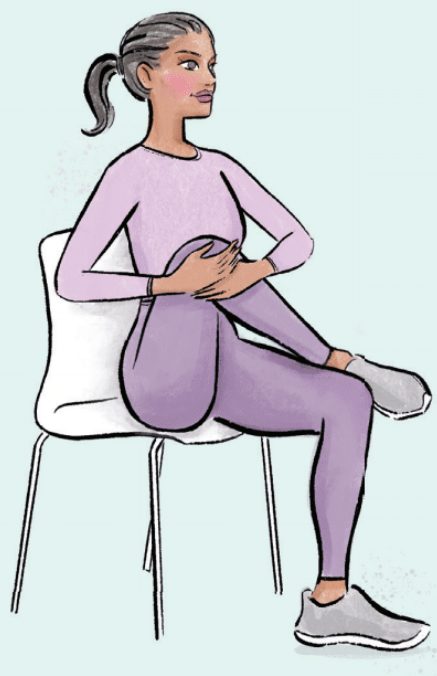 Seated stretch
Seated stretch
- If these are too hard, or you want to quickly reduce your pain, sit on a chair or edge of the bed and place the ankle of the affected side on your other knee – or as high up your thigh as you can manage.
- Grab the knee of the leg to be stretched with both hands and pull it toward the opposite shoulder until a stretch is felt in the butt.
- Hold for 20 seconds.

